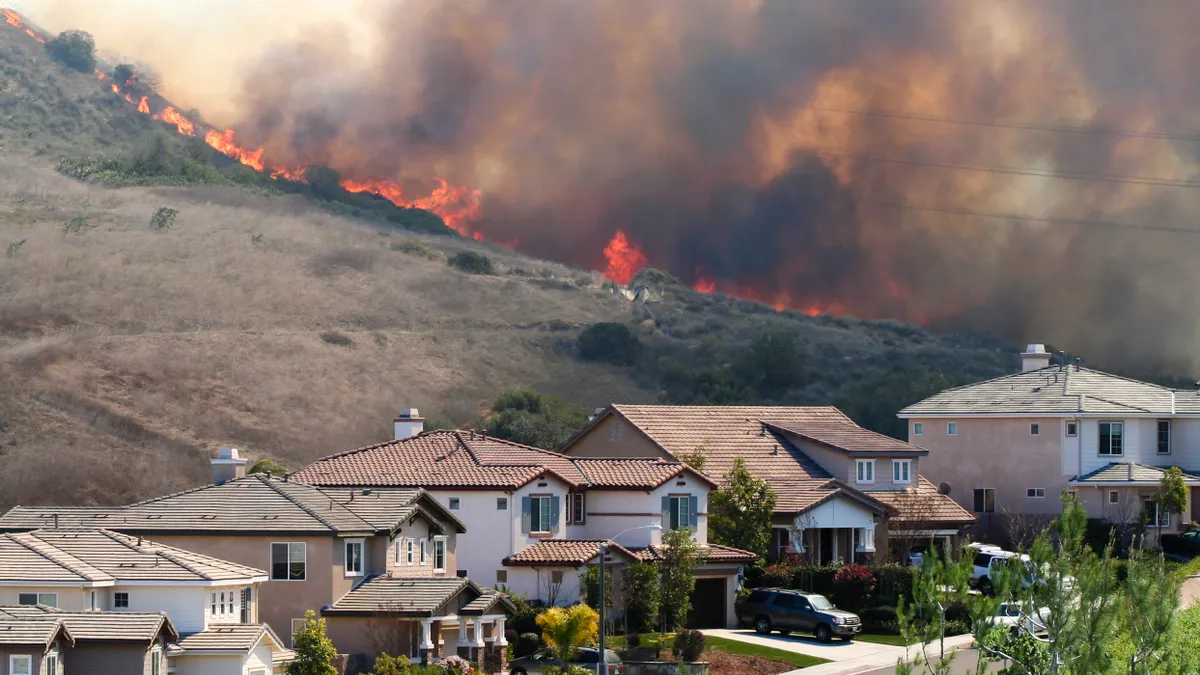The Camp Fire that ravaged northern California in November of 2018 was a stark reminder of the devastation wildfires can cause. The deadliest and most destructive wildfire in California’s history, the Camp Fire caused 85 civilian deaths and injured 12 citizens and five firefighters. The fire destroyed over 18,000 structures, including 95 percent of the structures in the towns of Paradise and Concow. The fire was caused by a faulty transmission line, and the utility responsible was forced into bankruptcy and pled guilty to 84 counts of involuntary manslaughter.
Sadly, the Camp Fire may not be an anomaly. Indeed, wildfires pose a significant and increasing risk to utilities and their customers. According to the National Oceanic and Atmospheric Administration (NOAA), who track extreme weather events that result in at least once billion dollars of damage, there were six such wildfire events, including the 2023 fire that destroyed the town of Lahaina on the Hawaiian island of Maui and resulted in 100 deaths.
Utility wildfire risks include extreme financial and criminal liability that arise when grid infrastructure – particularly transmission and distribution lines – cause damaging fires. Public safety is always the top priority of utilities. Thus, the risks on grid infrastructure is paid close attention. The consequences of wildfires are large, including, but not limited to, financial liability, damaged or destroyed grid equipment, power outages, or even death. In fact, power outages resulting from extreme weather events, including wildfires, have doubled over the past two decades.
The problem is only expected to worsen. For example, a report by the U.S. Department of Agriculture indicates that a one-degree Celsius (1.8-degree Fahrenheit) increase in average temperatures across the Western United States could translate into a 600% rise in burned forestland in certain areas.
Why utilities need to prioritize wildfire prevention
Necessary investments to prevent grid-ignited wildfires are not keeping pace with the rising risk. A recent report by the ICF Climate Center estimated there is a $100 billion dollar utility investment shortfall for utilities to adequately address wildfire risks to their grids. The report is one of many that highlights both the wildfire risk utilities face and the need to make smart investments to address the vulnerabilities.
Many utilities understand the challenge they face and have made investments in system hardening, better vegetation management, more precise weather forecasting and improved fire detection. Some utilities have undergrounded their distribution circuits, which is the most effective tool to reduce liability, but also the most expensive and not scalable. Funding from the Infrastructure Investment and Jobs Act (IIJA) and the Grid Resilience Innovation Partnership (GRIP) is aimed at bolstering grid resilience, including against wildfires.
Covering wildfire risk
One important and cost-effective step a utility can take is to add covering to its primary and secondary distribution circuits. It’s a step that proactively addresses the most common risks of wildfire ignition, especially if the protective coverings are augmented by a cable circuit design incorporating a messenger that enhances their effectiveness during high wind events.
"An energized bare conductor comes down relatively easy when trees or branches fall on them, which can ignite the spark that causes a wildfire," said Michael Blaha, VP Utility, at American Wire Group. "If the cable is covered and placed under a non-energized messenger with a spacer, the high tensile strength messenger does not arc or come down easily, reducing the risk of igniting a fire."
American Wire Group (AWG) developed the AerialGuard System Solution, which includes thermoplastic or thermoset covering solutions and accessories that harden primary and secondary distribution wires rated at 15 kV, 25 kV and 35 kV.
The value of a holistic, customized solution
Leveraging a wide-ranging system that includes insulated covering layers as well as spacers and other accessories delivers more protection against direct shorts and instantaneous flashovers that can happen when tree limbs and other objects touch wires than coverings alone. What makes the AerialGuard System Solution even more effective is the fact that each deployment is designed to address the unique risks faced by a utility. Some utilities, for instance, may need to enhance the protection of distribution lines that go through highly forested areas, high fire risk areas or congested and space-limited areas that must accommodate multiple circuits. The choice of the right spacers and accessories will vary depending on the individual circuit requirements of each utility’s application.
“This is a custom solution, using products we have in stock,” Blaha said. “The best protection depends on where it is being installed. What we do is have our in-house engineers look at the location and the risks to figure out the best configuration of spacers, insulators and hardware for a specific line. Our engineers work with the utility to engineer the best solution.” Additionally, AWG provides specific guidance on installation of the AerialGuard System Solution to ensure that it delivers the maximum fire protection possible.
While the AerialGuard System Solution is particularly useful in protecting against wildfire risk in forested areas, the danger of ignitions that result in damage and outages is increasingly pervasive. Indeed, the increasing likelihood of extreme weather like tornados and other fire risks means that utilities need to embrace proactive fire prevention solutions even in places where trees are sparse or non-existent. “It helps prevent any kind of spark,” Blaha said. “If a high windstorm comes through an open area, it can cause an ignition. This is a system that can address fire risk and its damage anywhere.”










